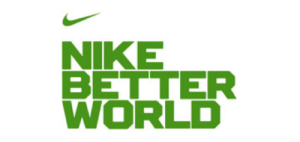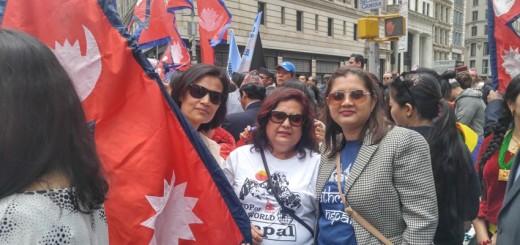Nike’s CSR Challenge | Case Study
One of the popular known brands Nike, who manufacture sports and clothing, has more than 50,000 workers produces shoes through subcontractors. Most of their factories are located in Asian countries because of large non-employed population and low cost workers.
In 2005 Nike started disclosing their CSR activities after a couple of years of silence due to legal concerns. After several audits Nike reported that a large percentage of their overseas factories have their employees working in terrible environments for low pay and in unsanitary health conditions. This is the first time that a major corporation has revealed such problems to the public so honestly. Nike is now taking a new strategy and approach in an attempt to correct these problems. They are attempting to take responsibility to effect positive systematic changes in working conditions with several branches of their industry.
Nike plans to reshape the way customers, supplies, investors, and regulators see the company. They are changing it from a closed system and making the company more open so that suppliers and customers can relate to Nike. One of Nike’s problems is changing the way its leadership and management style that is “leaders beyond borders” meaning leaders reach out to more than just their professional role and engage people on shared goals. Nike needs to reach out to wider issues of trade flows, governance, and media otherwise all their changes may not make a difference as they optimistically hope.
Case Questions:
- Discuss the challenges regarding corporate social responsibility that companies in the apparel industry face in their supply chains around the world.
- The apparel industry is possibly for the most part at risk to issues of social responsibility. The industry is still somewhat labor intensive and operates in a low wage environment. For example, in developing countries, apparel and sports manufacturers lack trained personal, information on CSR implementation and benefits and insufficient infrastructures for initiating CSR, but 25% to 50% of the factories in the South Asian region restrict access to toilets and drinking water during the working day. The industry has a lot of contract manufacturing in which a foreign firm is contracted to do all the production for the firm owning the brand.
Extra working hours are also required to meet demands, which result in overtime and poor working conditions in developing countries, but the same percentage of factories in Asia denies workers at least one day off in seven. More than 60 hours per week and 25% of workers punished for refusing overtime work. All of this can lead to the problems we can see in this case.
- Discuss the meaning and implications of the statement by a Nike representative that “consumers are not rewarding us for investments in improved social performance in supply chains.”
– This statement suggests that those companies who invest their sources on “above-standard compliance” will be outperformed by those companied who are less concerned about compliance. Therefore, companies who concerns about compliance have to either reduce their profit margin or lose in market share if they charge extra for improved social performance. Nevertheless, it is not a good excuse for not doing the right thing. Although competitors may be engaging in unethical practices, and consumers may not care about the working conditions of foreign employees, it is still not a justification situation to engage in socially irresponsible actions. In the case of Nike, the company is not competing with the low end of the market, and one would assume that the premium pricing of the brand could allow for improvements in wages and working conditions. It should be pointed out that consumer perceptions and concerns can change and a firm can find it dealing with a successful PR campaign directed toward its practices. Consumer “rewarding” can change and make such companies vulnerable due to their foreign employment practices.
- What does it mean to have an industry open-systems approach to social responsibility? What parties are involved? Who are stakeholders?
- Open-system approach refers to the organization views its actions in terms of the effect it has on larger social system that’s not only concerning with internal part of companies such as employees, manager, material, equipment and production, and labors, but also all elements, which includes environment-such as competitor, suppliers, distributors and governmental regulator, as well as citizenship and its internal elements. Basically everyone is involved in this case, ranging from government, to company and even customers/buyers. Stakeholders are person with an interest or concern in business. In addition to being socially responsive to internal stakeholders such as domestic employees, the organization also views its impact on suppliers, investors, regulators and communities, regardless of their location.
- What is meant by “Leadership beyond borders”?
– Leadership beyond borders means that leadership moves beyond borders or barriers created by others. For example, leaders in the apparel industry would attempt to extend their influence beyond the company borders in order to deal with the CSR issues. Real life example could be Gandhi, who has given hopes, whose life and personality was enhanced in the process. This kind of leader is only little in existence.
Transcendent leadership offers us a metaphor to help Nike move more closely to a world where human talents and energies will be maximized for the betterment of al – personally, organizationally, and globally (Gardiner, 2006).
- Is it possible to have “a compatibility of profits with people and planet”? Whose responsibility is it to achieve that state?
– Yes, it is possible to have “a compatibility of profits with people and planet”, but this is an idea of socialism and in some point it does not work. It’s everyone responsibility to care for each other and everything. It is a based of culture on corporation not competition with not just humans, but also everything that lives on the planet including other animals and resources. This is a social ideal ecosystem. Some people work hard toward the needs of others and the planet, while others will exploit. So it must be mixed with areas of competition in order to maintain a balance of cooperation with competition.
- Research Nike’s CSR actions since the time frame and why it has earned the reputation as one of the world’s foremost organizations in sustainability.
– When Nike adopted open-system approach, they had believed that the future of the company will be dependent on every element – internal and external. They believe that good society will bring good profitability and thus it would contribute to sustainability, Nike managed to create a green life cycle, were Nike has managed to eliminate waste in production and harmful substances, and ensure that all their products are recyclable and re-usable.
Despite Nike’s efforts to take the lead in the apparel industry to form a Global Alliance to improve labor conditions, not only in its own factories and sub-contractors, but also among its competitors on the footwear and other apparel industries, incidents such as:
- Collapse in April 2013 of Rana building in Bangladesh, which housed a number of garment units, who were sub contractors to leading MNCs (Multinational corporations) collapsed, killing over a 1,000 people – mostly women and injuring seriously a few hundreds, keep happening.
- Early this year (2014) in the state of Tamilnadu in India, 7 workers died when they were cleaning a tank in a textile dyeing unit, KPR textiles, Perundurai, Erode district. They were exposed to toxic gases from chemicals used in dyeing.
Nike also took the lead in forming the Fair Labor Association (FLA). The awareness and the initiative taken by Nike has been acknowledged and appreciated by all the stakeholders in the industry, including customers. The operation council of the Global Alliance after detailed audit, has commended Nike for the processes introduced, not only in its own operations and among its subcontractors, but also in the rest of the industry.
References:
Adidas Group. Sustainability History. Retrieved from:
http://www.adidas-group.com/en/sustainability/managing-sustainability/sustainability-history/
International Institute for Sustainable Development (2013). Nike. From:
http://www.iisd.org/business/viewcasestudy.aspx?id=81
Megha, G. (2012). Corporate Social Responsibility in the Global Apparel Industry: An Exploration of Indian Manufacturers’ Perceptions. Recovered from:
http://libres.uncg.edu/ir/uncg/f/Gupta_uncg_0154D_11000.pdf
The Bangladesh Factory Collapse: Why CSR is more important than ever
http://www.theguardian.com/sustainable-business/blog/bangladesh-factory-collapse-csr-important
CM condoles death of 7 workers in textile dyeing unit. From:
http://www.business-standard.com/article/pti-stories/cm-condoles-death-of-7-workers-in-textile-dyeing-unit-114031900421_1.html
Trapped in Textile. Retrieved from:
http://newjurist.com/trapped-in-textile.html
-Bishal Aryal




